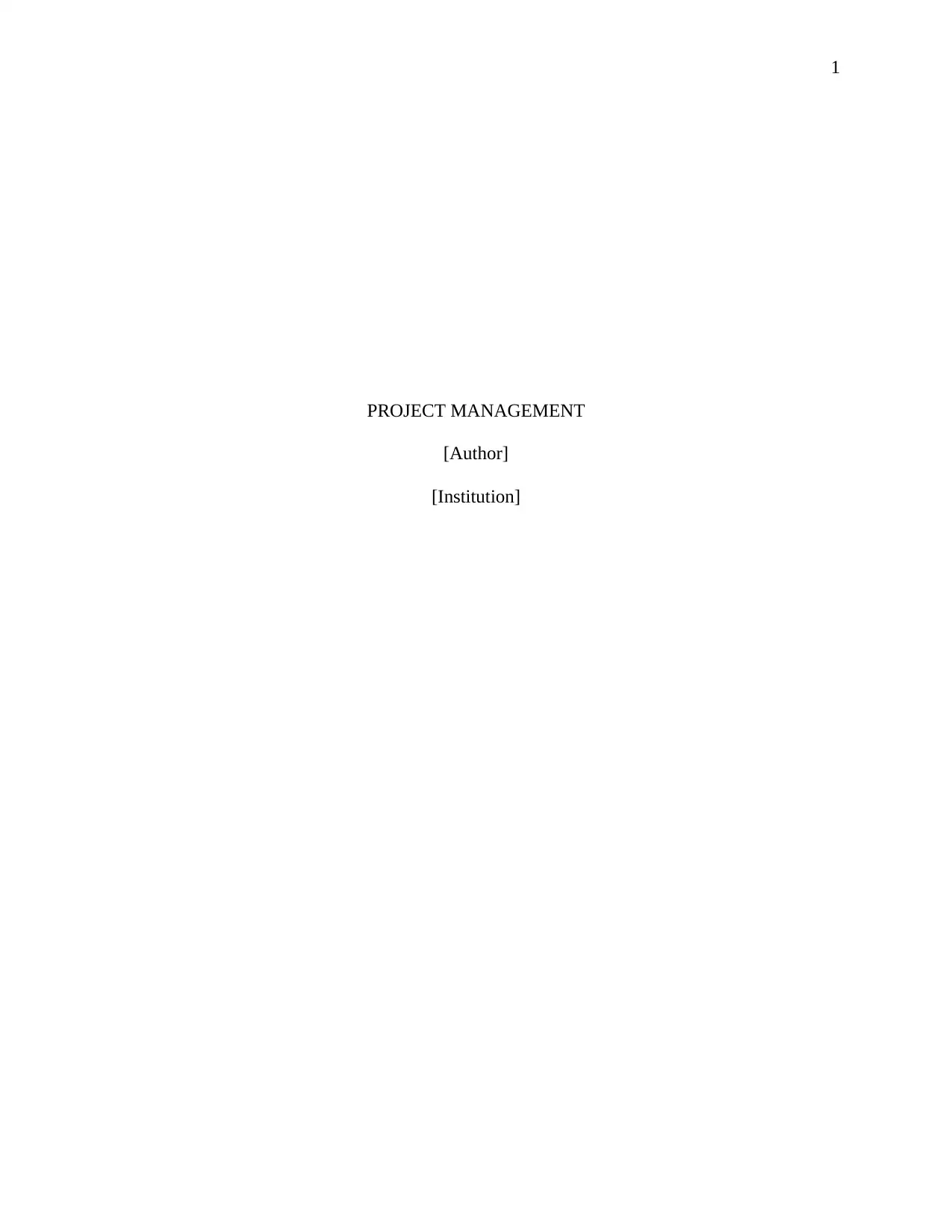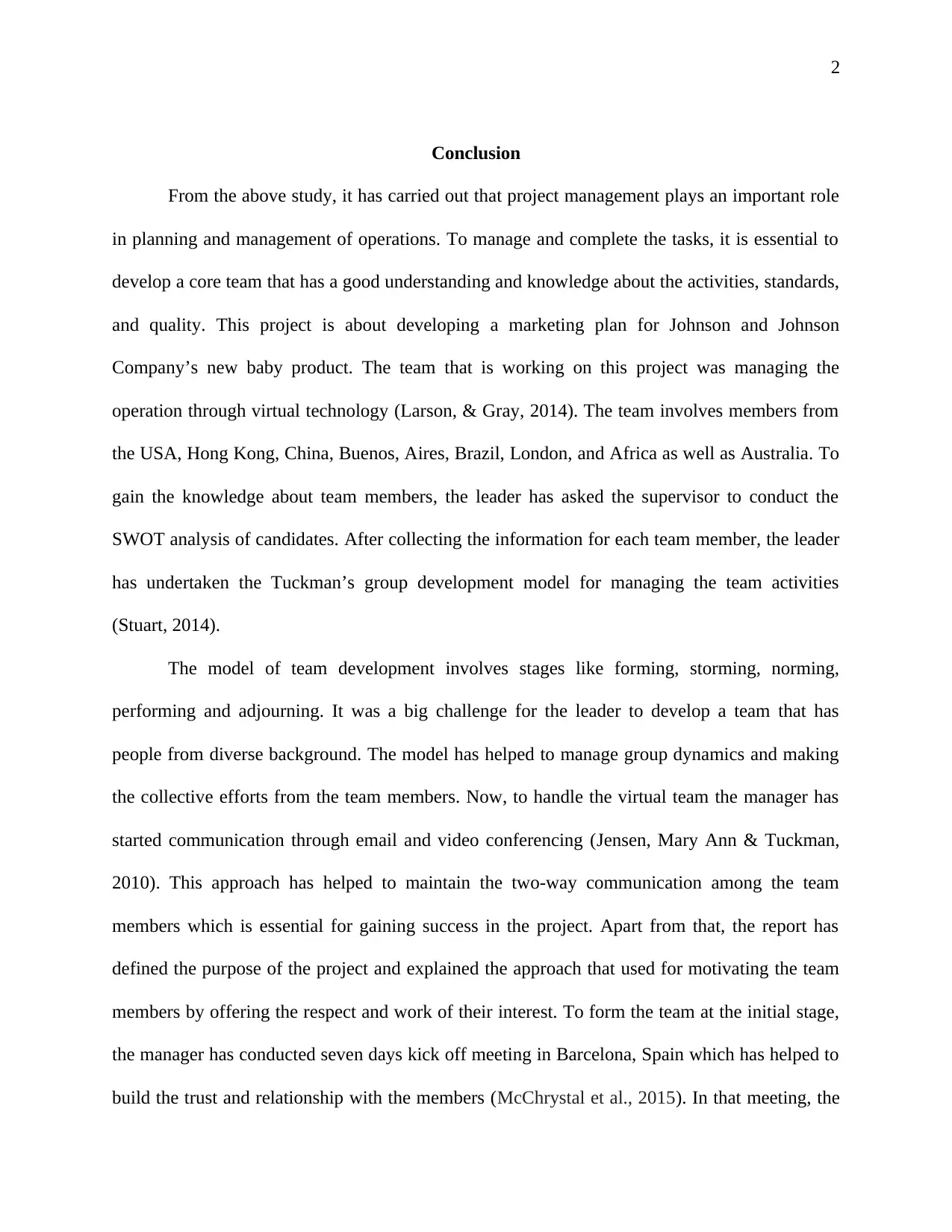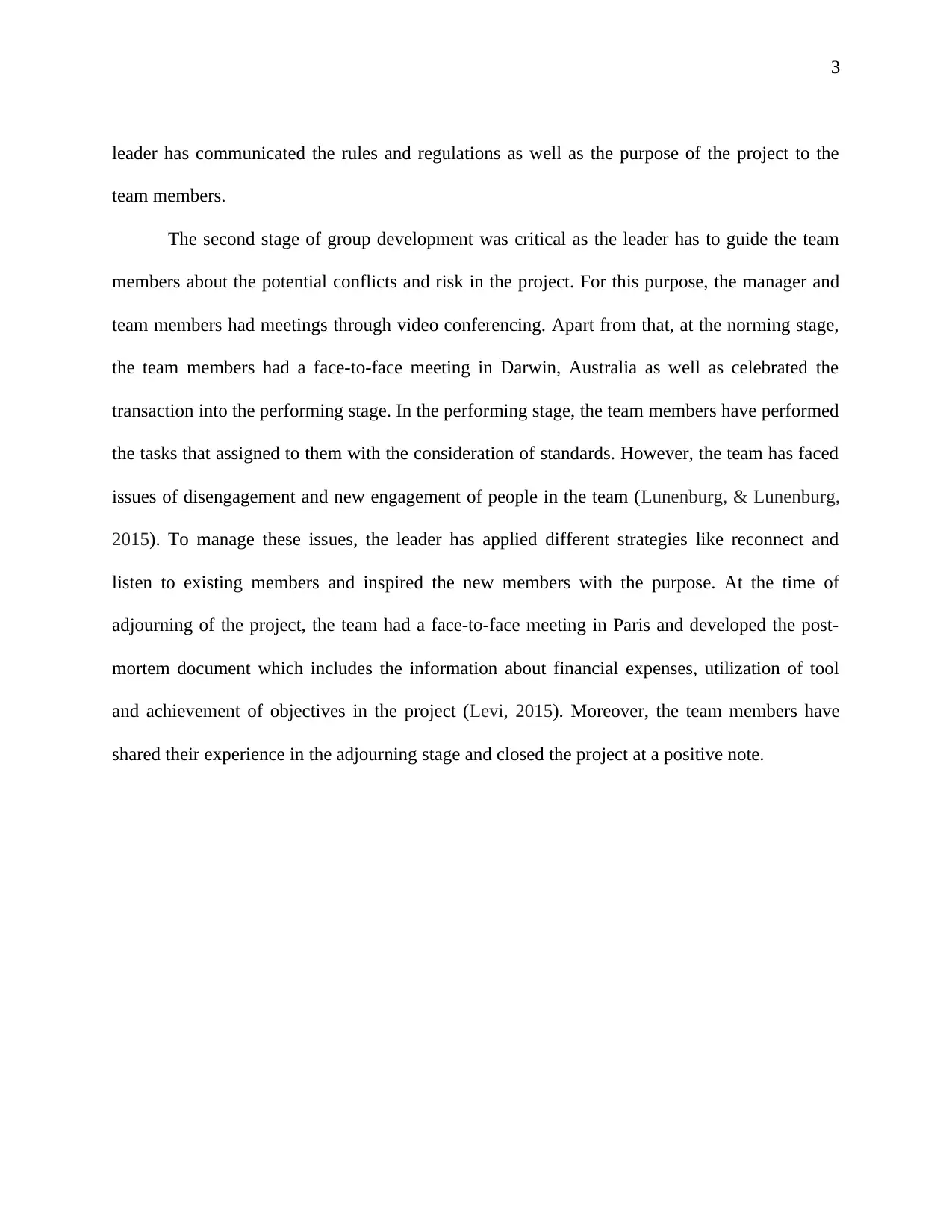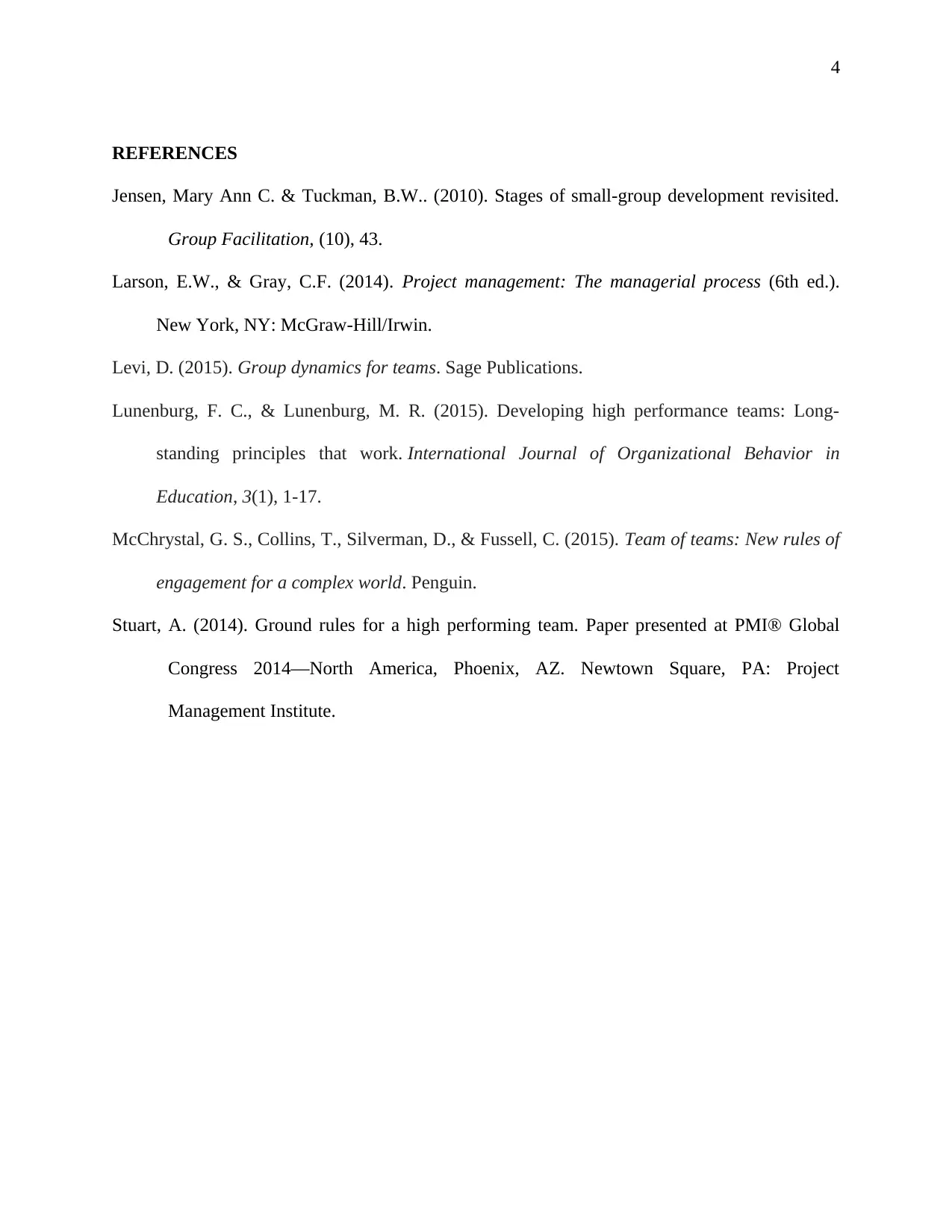Project Management Report: Developing a Marketing Plan for J&J
VerifiedAdded on 2023/04/25
|4
|803
|117
Report
AI Summary
This report provides a comprehensive overview of a project management initiative focused on developing a marketing plan for Johnson & Johnson's new baby product. The project involved a globally distributed virtual team, necessitating the application of effective team management strategies, including Tuckman's group development model. The report details the challenges of managing a diverse team, the communication methods employed, and the strategies used to maintain team engagement. It also addresses risk management, particularly concerning team member disengagement and the integration of new members. The project's phases, from initial team formation to final adjournment, are described, highlighting key meetings, conflict resolution, and the development of a postmortem document to capture lessons learned and project outcomes.
1 out of 4










![[object Object]](/_next/static/media/star-bottom.7253800d.svg)